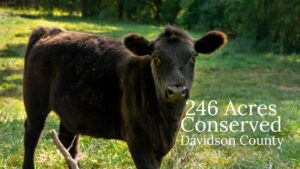
by Crystal Cockman
July 20, 2017

A friend of mine sent me a picture of the beautiful river birch she has on her property near Troy a while back. Another friend is proud of her sycamore tree in her front yard, which sold her on the house where she lives currently. This got me to thinking about the trees in our forests in the eastern United States that possess exfoliating bark. The term exfoliating or peeling bark describes the natural process and condition of the bark peeling away from a tree trunk.
River birch (Betula nigra) is a deciduous tree that is native to the eastern United States, north to Minnesota and west to Kansas and south to Florida. They are restricted to stream banks and other moist places. Trees can grow up to 70 feet tall and 30 inches in diameter. They are one of the few heat-tolerant birches in a family of mostly cold-weather trees.
The bark of the river birch is very distinctive – gray-brown to pinkish brown to ivory, exfoliating in curly papery sheets. Leaves are alternate, simple, and oval shaped with serrated edges. Fruits mature in late spring, making it a valuable tree for wildlife. White-tailed deer browse the twigs, buds and foliage, and grouse, turkeys, small birds and rodents eat the seeds.
The American sycamore (Platanus occidentalis) is another lowland species native to North America. They too have exfoliating bark that flakes off. This leaves the surface of the tree mottled and greenish-white, gray and brown. The bark of the tree has to give way to a growing trunk by stretching, splitting or infilling. The bark of sycamore trees is very rigid, and will not stretch to accommodate the growing tree underneath, so the tree sheds it off.
The sycamore grows to a larger trunk diameter than any other native hardwood. The present champion tree’s diameter is 11 feet, and there are records up to 16 feet in diameter. Sycamore trees can grow from 100 feet to 150 feet tall. They also have the largest leaves of any native tree in North America. They are one of the oldest species of trees on earth. Small animals like squirrels commonly den in sycamores because of the warped, twisted branches.
The shagbark hickory (Carya ovata) is a large deciduous tree growing in the Eastern United States and Canada. They can be over 100 feet tall and live more than 350 years. They have shaggy bark, as their name implies, though it looks different from the bark of the riverbirch or sycamore. It is thicker and more prominent, as long peeling strips. The nuts of a shagbark hickory are edible and were an important food source for Native Americans and early settlers. They are eaten by a wide variety of wildlife. They grow best on moist but well drained soils in humid climates. A fun fact: Andrew Jackson, the seventh U.S. president, was nicknamed “Old Hickory” because he was considered to be as tough as a hickory tree.
These trees with exfoliating bark have a really unique appearance. River birches look very delicate and pretty, while shagbark hickories look coarse and shaggy. Keep your eye out for these species on your next walk in the woods and take a minute to notice their distinctive look and how they differ from other trees without the exfoliating bark. Some species of bat may roost behind the shaggy bark of a shagbark hickory. Think about what other ways these trees may provide for wildlife species.